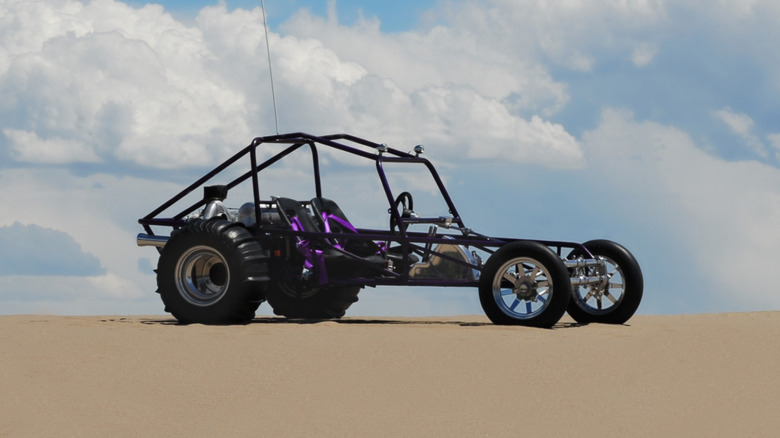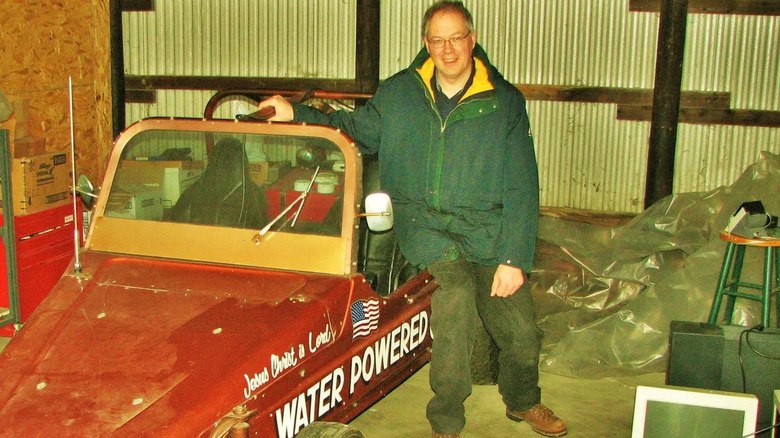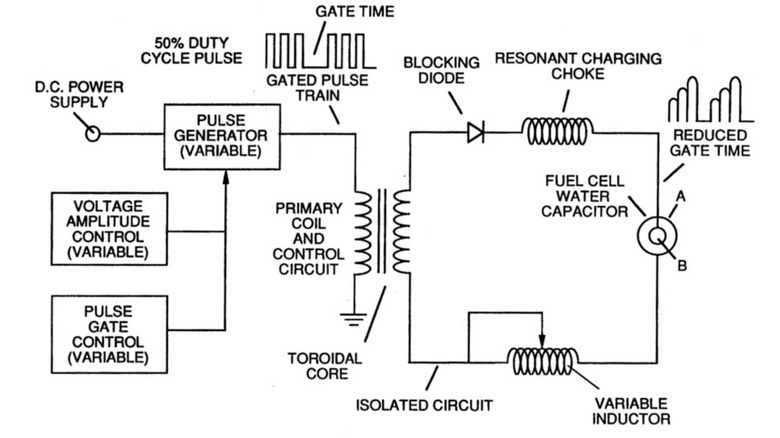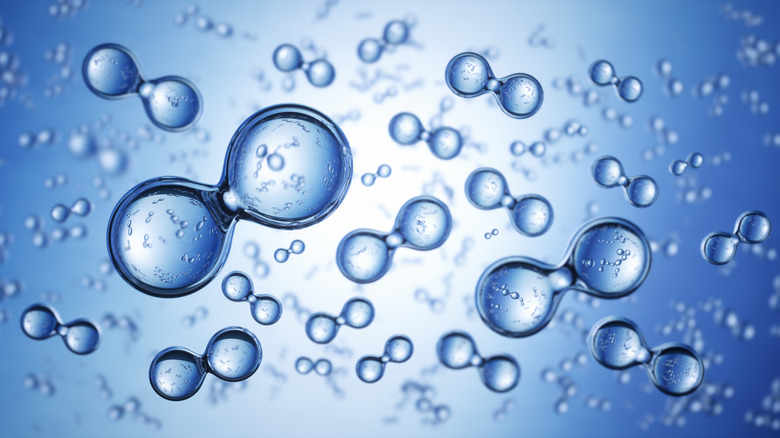The Deadly Conspiracy Theory Surrounding The Car Powered By Water
Imagine a world no longer dependent on fossil fuels. Instead, our cars, lights, and gadgets draw power from one of Earth's most plentiful resources: water. This vision captivated the mind of American inventor Stanley Meyer, who claimed to have developed a groundbreaking device that could transform this dream into reality. Meyer's invention, the water-powered fuel cell, was designed to operate solely on water.
Remarkably, this device was said not to store hydrogen. Instead, it conducted on-the-spot electrolysis, extracting hydrogen from water on demand to fuel its engine. This would eliminate the need for a hydrogen tank or any storage, relying simply on water and combustion.
However, the narrative took a tragic turn when Stanley Meyer passed away. His death ignited waves of controversy and birthed conspiracy theories, with many speculating that he was deliberately poisoned. Let's take a look at Stanely Meyer's water-powered fuel cell, the man behind the invention, his untimely death, and the deadly conspiracy theory surrounding the car powered by water.
Stanley Meyer: The inventor
There is limited information available on Stanley Meyer's personal life, likely due to his family's concerns surrounding the circumstances of his death and their preference for privacy.
Born in Ohio in 1940 alongside his twin brother Stephen Meyer, Stanley's life came to a premature end in 1998 under what some regard as mysterious conditions. He pursued his education at Ohio State University and also served in the armed forces.
Stanley developed a keen interest in the concept of a water-powered vehicle, an idea possibly influenced by the 1973 Arab Oil Embargo, which severely restricted oil trade with the United States and led to soaring gas prices.
Throughout his life, Meyer obtained several patents for inventions he believed could power engines solely with water. These patents are accessible to the public, and his detailed technical document on the water fuel cell, titled "The Birth of a New Technology," can still be read today.
The water-powered car: A revolutionary concept
The concept of water-powered cars is straightforward in theory. To grasp it, one must first understand the chemical makeup of water, which is H2O. Viewing water as "oxidized hydrogen" can make the process clearer.
Hydrogen is a highly combustible gas with the potential to power vehicles. The challenge, however, arises when trying to extract usable hydrogen from its bonded state with oxygen in water, during which it loses its combustible properties.
A water-powered car aims to actively separate hydrogen and oxygen, utilizing the former as a zero-CO2-emission fuel, in contrast to fossil fuels. Some proponents even suggest that the extracted oxygen could be recombined with hydrogen to regenerate water, thus providing a perpetual fuel supply. While this sounds promising on paper, the practicality is questionable. To date, no one has successfully developed a fuel cell that powers cars solely on water.
The key challenge is the inefficiency of electrolysis, the process used to separate hydrogen from oxygen. The energy consumed in extracting hydrogen from water often surpasses what can be generated to power a vehicle. In terms of energy efficiency, the current technology doesn't make the equation viable.
Achievements and demonstrations
Throughout his life and even well after his death, Stanley Meyer's water-powered fuel cell garnered significant attention and anticipation. Meyer claimed to have constructed a functional model, which he incorporated into a dune buggy.
While no existing video evidence actually shows the car in operation, and it remains unconfirmed if it genuinely functioned on a water-powered engine, Meyer did conduct several demonstrations while seeking funding for his innovation. However, substantiating these claims has proven challenging.
Meyer's work garnered enough prominence to secure a feature on the British television program, "Equinox," in 1995. The episode, aptly titled "It Runs on Water," delved into the potential of water as a fuel source and explored what was then termed as "fringe science."
The episode presented a balanced perspective, with scientists expressing skepticism about Meyer's claims. However, they acknowledged that should new evidence or facts emerge, it could reshape the boundaries of what's deemed possible.
Skepticism and criticism
Stanley Meyer was able to gather quite a large following and a fair amount of funding from investors. However, his patents and water-powered car were all built on a house of cards. In 1966, Meyer was called before the Ohio State courts to address allegations of fraud. Due to the absence of tangible proof that his car operated, as claimed, and his inability to present functional evidence, the court ordered him to refund all investments.
While Meyer had claimed to showcase a functioning car during his tours, the only available evidence was anecdotal, with eyewitness accounts but no video footage or operational models for his defense. Typically, such proceedings would undermine an inventor's reputation. Yet, Meyer retained a significant number of supporters and followers. However, his financial backers were considerably less enthusiastic.
If Meyer had genuinely developed a working prototype, one would expect at least a model or detailed designs and schematics outlining its operation. Although he did produce designs for his patent application, they were criticized for their striking resemblance to pre-existing electrolysis machines. The crucial bridge between functional electrolysis and hydrogen fuel conversion remained ambiguously defined.
Is the auto industry stifling technology?
Over the years, the automotive industry has been the subject of numerous conspiracy theories and urban legends. These sensational stories aren't restricted to shadowy forums or hidden corners of the internet. Among the most enduring are those of the 100 MPG carburetor, the 376 MPG car, and even claims that Nikola Tesla crafted a perpetual motion machine.
Car enthusiasts are likely familiar with the legend of the 100 MPG carburetor. This story can be traced back to the 1920s and 1930s. The story goes that a car drives for several days, the fuel gauge remains unchanged, and the tank is still full after several hundred miles. However, at the mechanic, it goes back to normal mileage, or the car disappears. While this anecdote makes for entertaining conversation, there is no proof it actually happened.
In contrast, the 376 MPG car does have factual backing. In 1973, Shell re-engineered a 1959 Opel to achieve an authenticated mileage of 376 miles per gallon. While this marked a significant leap in fuel efficiency, the vehicle was not suited for regular use, given its extensive modifications.
Yet even this achievement pales in comparison to the 1557 MPG milestone. The SAE Supermileage competition tasks university teams with designing ultra-fuel-efficient vehicles. In 2022, Université Laval won with a car that hit an astonishing 1557 miles per gallon. However, like previous records, this vehicle was an experimental model, not intended for everyday use.
It proves that outrageous fuel efficiency is possible, but outside of lab conditions, it may be impossible to reach the functionality outside of urban legends, and unlikely that the automotive industry is hiding technology from the public.
The conspiracy theory: Mysterious circumstances of Meyer's death
It's perhaps the manner of Stanley Meyer's death that made him so infamous in the automotive world. His real-world death sounds like it's pulled straight out of the pages of an Ian Fleming novel. Meyer met his end during a meeting alongside his brother and two potential investors. At some point, he suddenly began to convulse and vomit. Meyer's brother recounted that among his last words was a declaration that he had been poisoned. Subsequent autopsy reports, however, attributed his death to a cerebral aneurysm.
This discrepancy in accounts fueled a myriad of conspiracy theories. Despite the conclusive medical findings, many continue to speculate that Meyer was silenced to prevent his water-powered designs from reaching public hands, ostensibly at the behest of powerful automotive interests.
Many sites have popped up in defense of Stanley Meyer and his family, claiming that his invention works and that it's being covered up for political reasons and money. They use his writings as proof that his invention worked and freely distribute and encourage others to try and replicate the water-powered fuel cell.
While some proponents genuinely believe in the functionality of his invention and aspire to share this knowledge, others promote more controversial or even prejudiced narratives. Whichever side of the argument they fall on, nobody has yet been able to produce a practical, fuel-efficient, water-powered fuel cell envisioned by Stanley Meyer.
Legacy and impact
Many of Stanley Meyer's patents are now in the public domain. Thus, anyone intrigued by the prospect of creating a working and efficient water-powered vehicle is free to explore his work. The fact remains, however, that nobody has done so, which lends credibility to the theory that it never worked in the first place.
Many organizations and individuals have conceptualized the idea of water or hydrogen-powered vehicles. And over the years, there have been various claims of inventions that could transform our conventional fuel-driven automotive landscape. Some have touted promising prototypes, while others have been mired in controversy, dubious claims, or eventual technological dead-ends.
Should an innovator successfully develop a truly efficient water or hydrogen-powered car, it's unlikely such a breakthrough would be able to be suppressed or hidden by any industry or corporation. The realization of an environmentally friendly water-powered car would yield significant profits and undeniably revolutionize both the automotive industry and environmental conservation. Such an invention could transform our world overnight.
Moreover, the economic incentive is vast. While traditional energy sectors might feel threatened, entrepreneurs, investors, and even major automotive companies would rush to capitalize on this novel technology, given the potential returns and societal benefits.
The dream of a water-powered vehicle remains a tempting goal. With the urgency of addressing climate change and the shifting paradigms in energy sources, innovations in this field could redefine the future of transportation and energy consumption globally. It's a matter of combining the right science, engineering, and vision.







